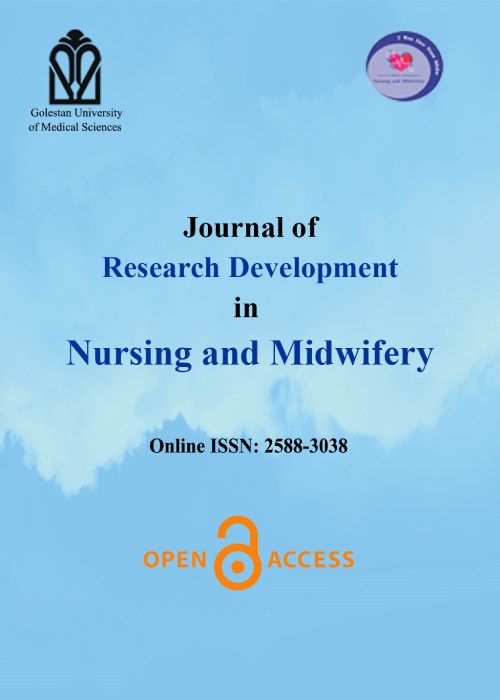The Effect of Open and Closed Endotracheal Tube Suctioning System on Cardio- respiratory Parameters of Infants Undergoing Mechanical Ventilation
Author(s):
Abstract:
Background And Objective
Mechanical ventilation is used for some infants in neonatal intensive care unit (NICU) due to many physiological and clinical causes. The practice of endotracheal suctioning of ventilator- treated patients is necessary to remove secretions to prevent obstruction of the endotracheal tube and lower airways. This study aimed at determining the effect of open and closed suctioning methods on cardio-respiratory parameters of infants undergoing mechanical ventilation. Material And Methods
In this clinical trail، forty-four infants underwent mechanical ventilation in NICU were selected by simple continuous sampling. The samples were randomly divided into two groups. In the first group: first، open suctioning and then after three hours of cleaning، closed suctioning was performed. In the second group، first closed suctioning and after three hours of cleaning، open suctioning was implemented. Respiratory rate (RR)، oxygen saturation، pulse rate and blood pressure were assessed before (in three، two and one minutes)، during and after (in one، two and three minutes) each type of suctioning. The Data was analyzed by Software SPSS-16 using ANOVA with repeated measures and independent t-test. Results
There was a significant difference between mean respiratory rate and oxygen saturation in infants during and after the closed and open suctioning (p<0. 05). Oxygen saturation had a significant reduction in open method compared to closed method during and immediately after suctioning. Respiratory rate had a significant reduction in 3 minutes after open suctioning in both steps. The mean of diastolic pressure in second step of open method and in both steps of closed method was significant (p<0. 05). There was a significant difference between the mean pulse rate in different times of open suctioning in the first step (p<0. 05)، Pulse rate drop significantly was lower in closed suction than open one (p<0. 05). Conclusion
because of little changes caused by closed suctioning in hemodynamic condition، it is recommended using the closed suctioning to prevent from respiratory complications and pulse rate dropping in infants.Keywords:
Language:
Persian
Published:
Journal of Research Development in Nursing and Midwifery, Volume:10 Issue: 2, 2013
Pages:
14 to 20
magiran.com/p1184313
دانلود و مطالعه متن این مقاله با یکی از روشهای زیر امکان پذیر است:
اشتراک شخصی
با عضویت و پرداخت آنلاین حق اشتراک یکساله به مبلغ 1,390,000ريال میتوانید 70 عنوان مطلب دانلود کنید!
اشتراک سازمانی
به کتابخانه دانشگاه یا محل کار خود پیشنهاد کنید تا اشتراک سازمانی این پایگاه را برای دسترسی نامحدود همه کاربران به متن مطالب تهیه نمایند!
توجه!
- حق عضویت دریافتی صرف حمایت از نشریات عضو و نگهداری، تکمیل و توسعه مگیران میشود.
- پرداخت حق اشتراک و دانلود مقالات اجازه بازنشر آن در سایر رسانههای چاپی و دیجیتال را به کاربر نمیدهد.
In order to view content subscription is required
Personal subscription
Subscribe magiran.com for 70 € euros via PayPal and download 70 articles during a year.
Organization subscription
Please contact us to subscribe your university or library for unlimited access!


